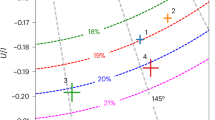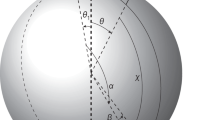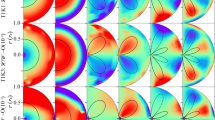Abstract
LARGE magnetic fields at the surface of neutron stars favour the formation of a condensed phase of electrons and positrons. It is possible to account for the narrow γ-ray line recently observed in the Crab spectrum from this phase with a flux of electrons and positrons at the surface of the neutron star in the Crab consistent with a recent model.
This is a preview of subscription content, access via your institution
Access options
Subscribe to this journal
Receive 51 print issues and online access
$199.00 per year
only $3.90 per issue
Buy this article
- Purchase on SpringerLink
- Instant access to full article PDF
Prices may be subject to local taxes which are calculated during checkout
Similar content being viewed by others
References
Leventhal, M., MacCallum, C. J. & Watts, A. C. Nature 266, 696 (1977).
Ruderman, M. Phys. Rev. Lett. 27, 1306 (1971).
Chui, S.-T. Phys. Rev. B 3438 (1974).
Sturrock, P. A. Astrophys. J. 164, 529 (1971).
Ruderman, M. A. & Sutherland, P. G. Astrophys. J. 196, 51 (1975).
Cheng, A., Ruderman, M. & Sutherland, P. Astrophys. J. 203, 209 (1976).
Author information
Authors and Affiliations
Rights and permissions
About this article
Cite this article
VARMA, C. Electron-positron flux at the surface of the pulsar in the Crab. Nature 267, 686–687 (1977). https://doi.org/10.1038/267686a0
Received:
Accepted:
Published:
Issue date:
DOI: https://doi.org/10.1038/267686a0



